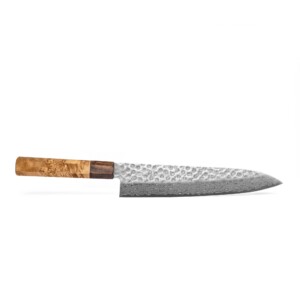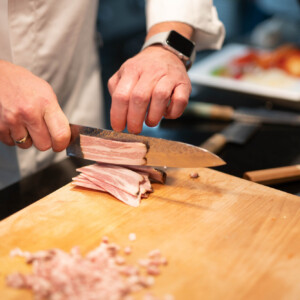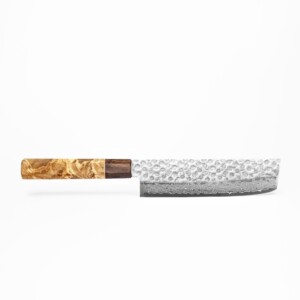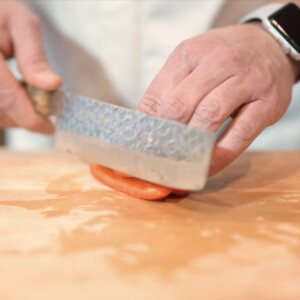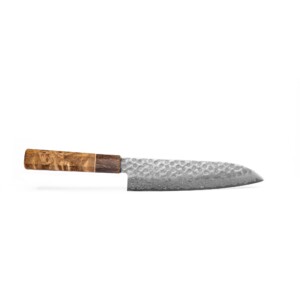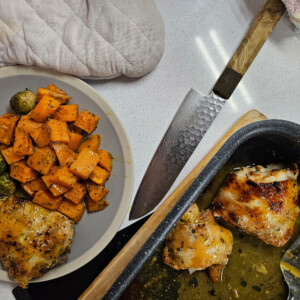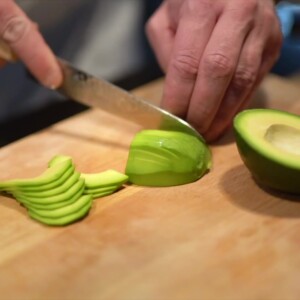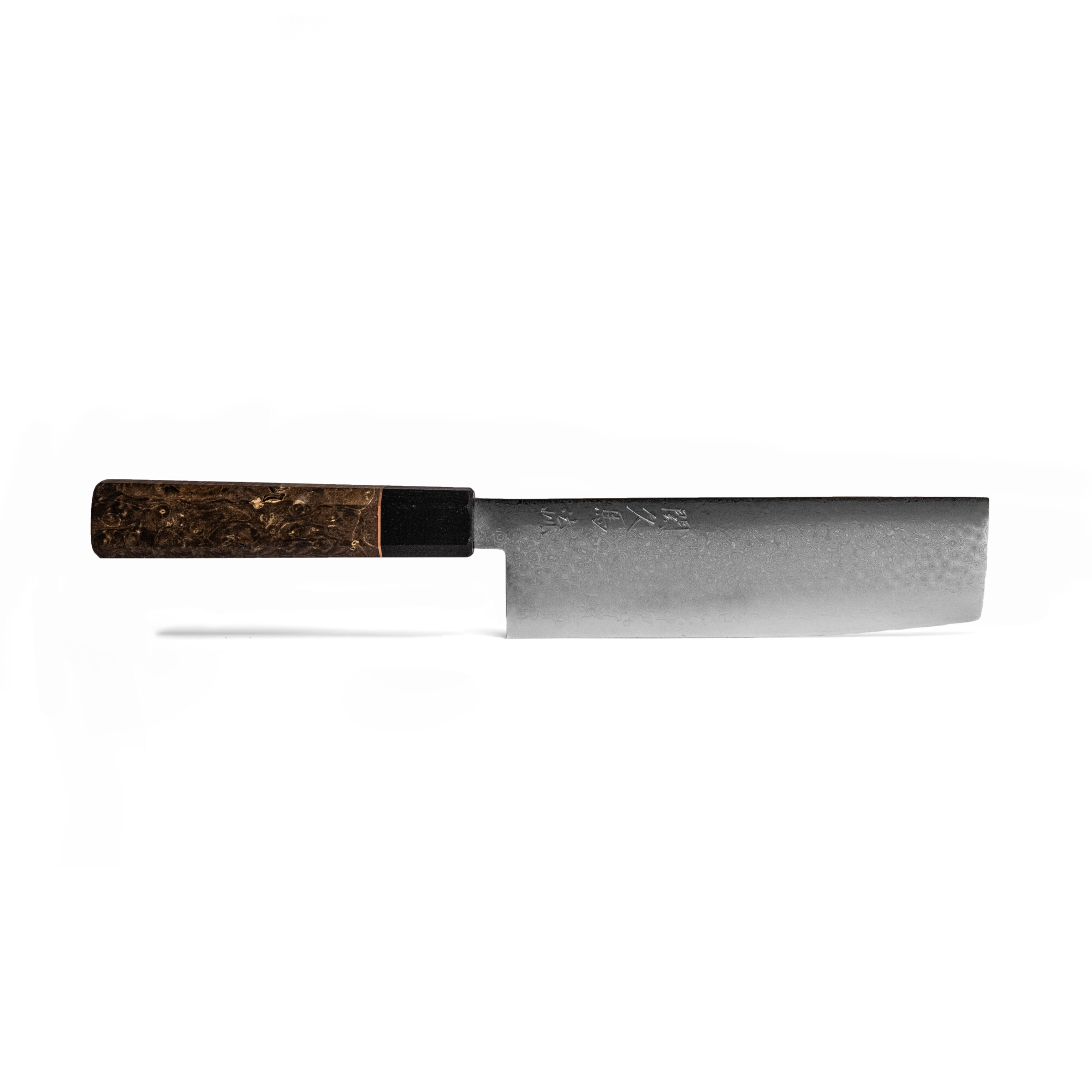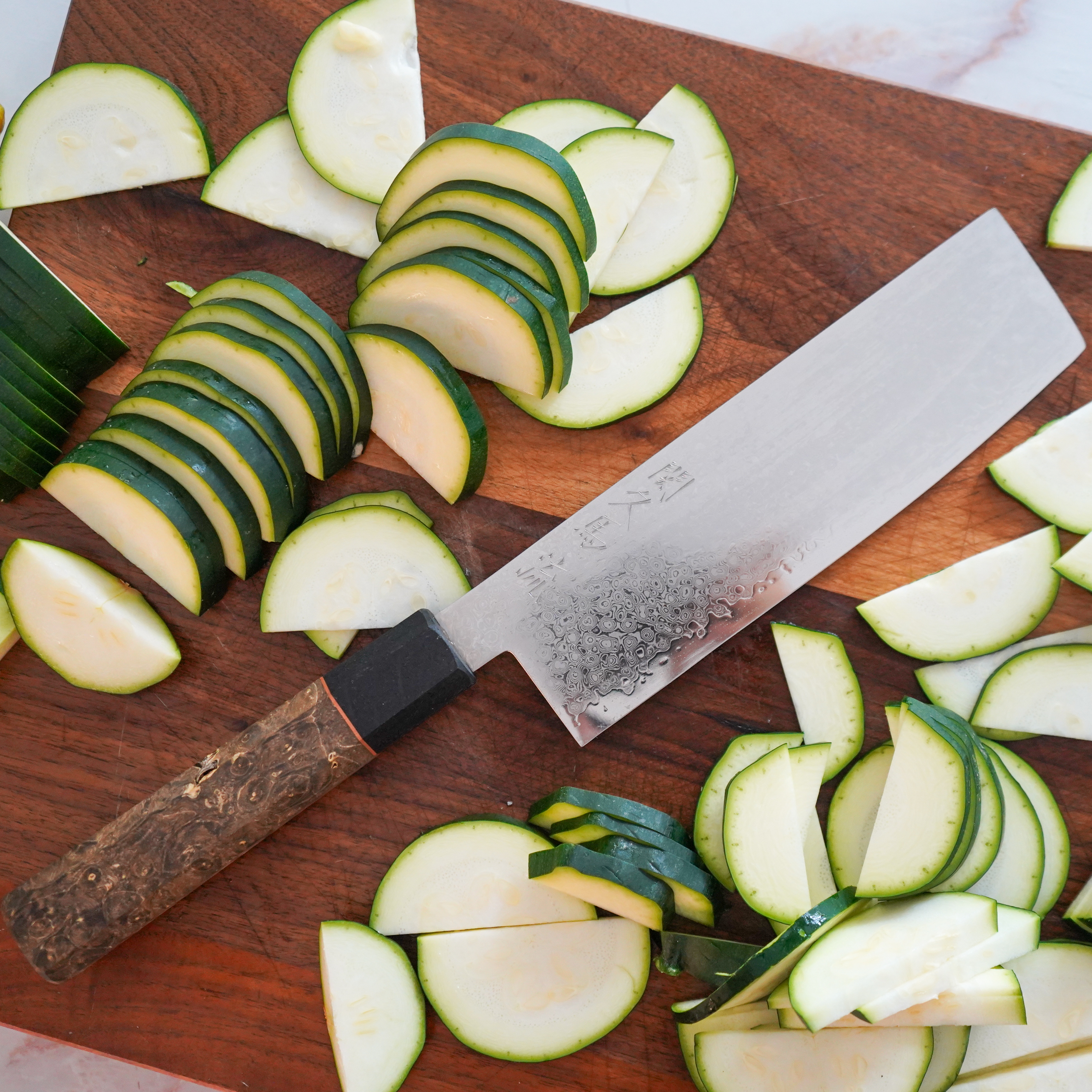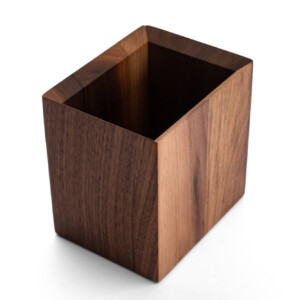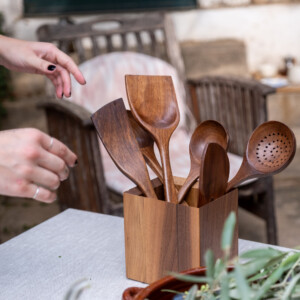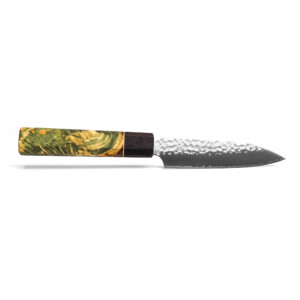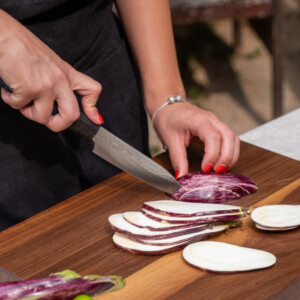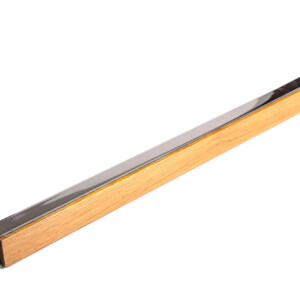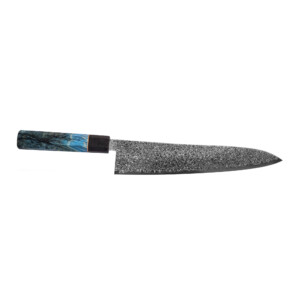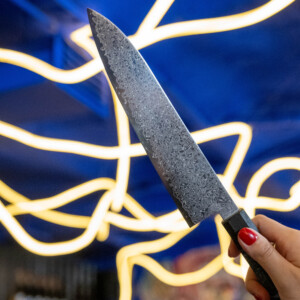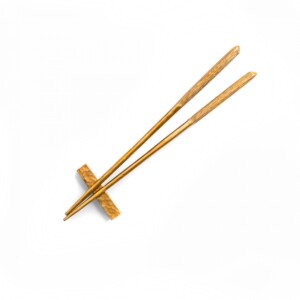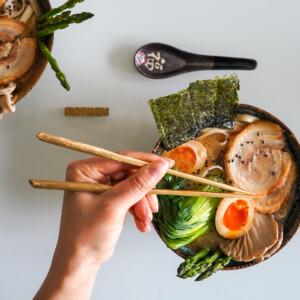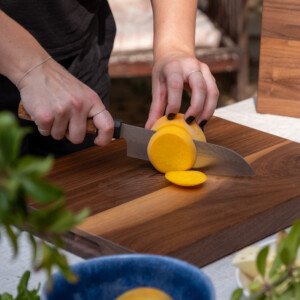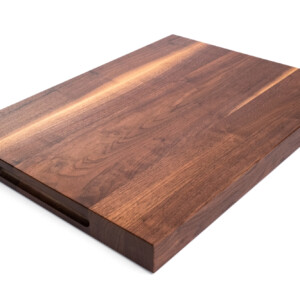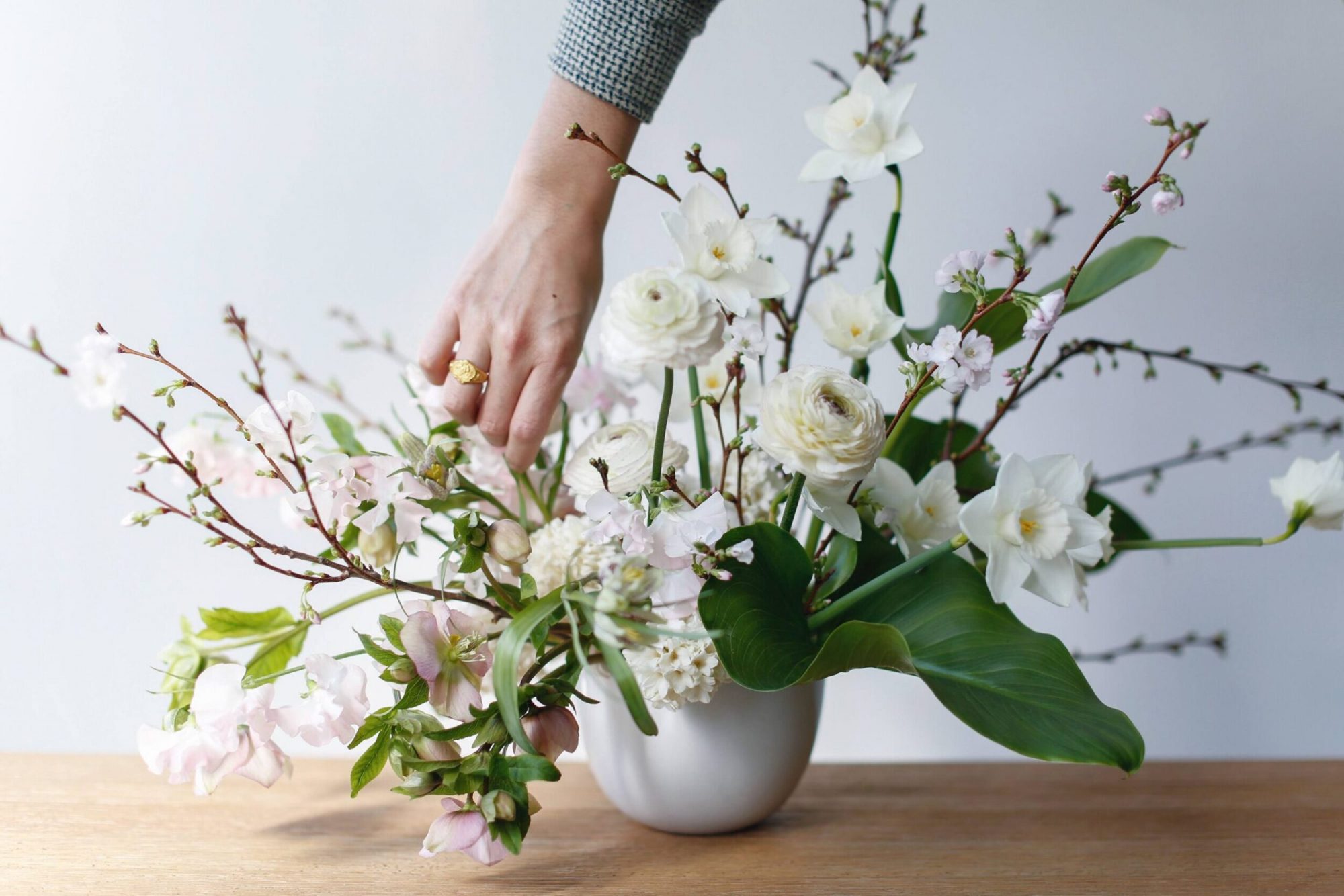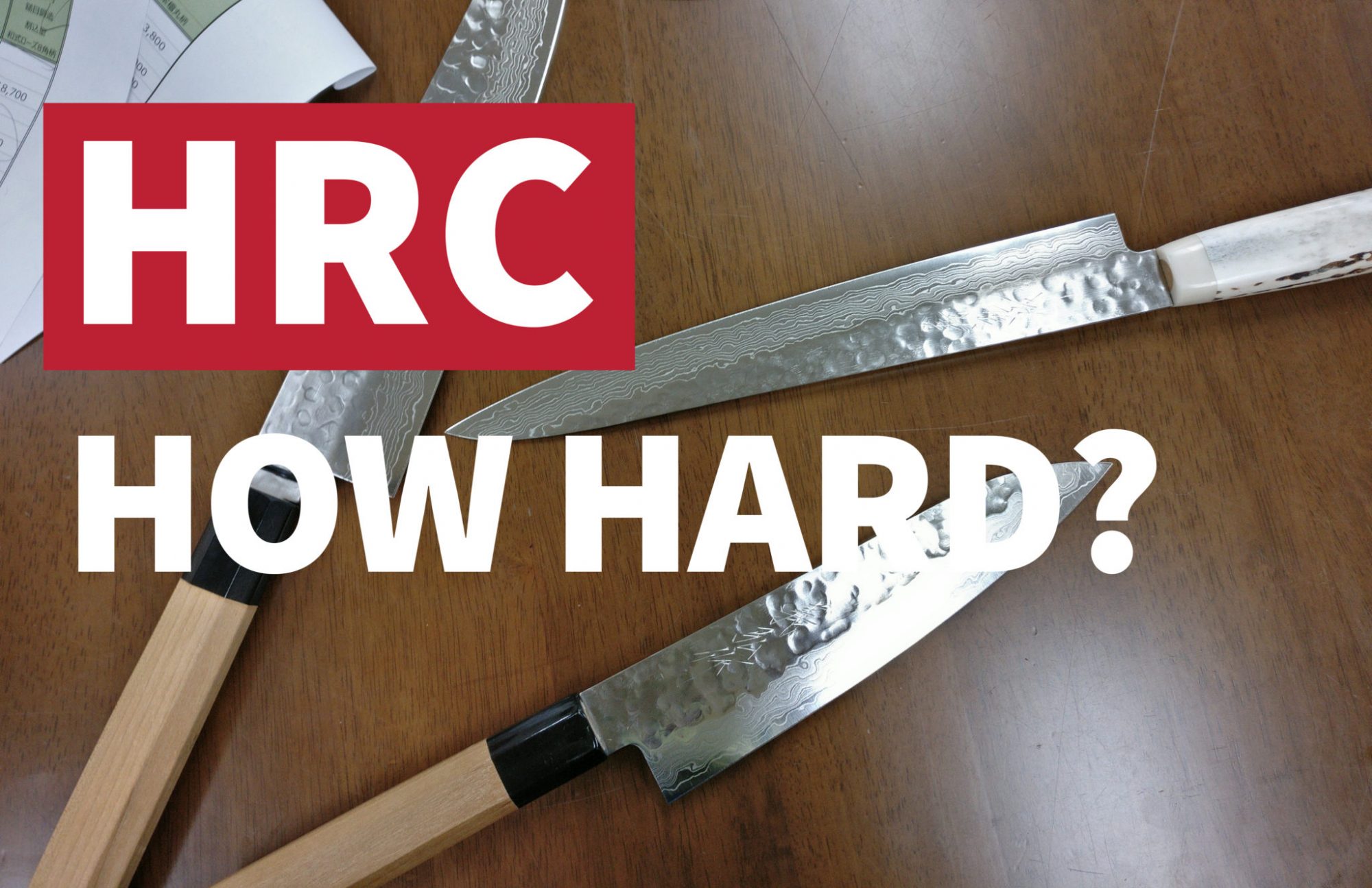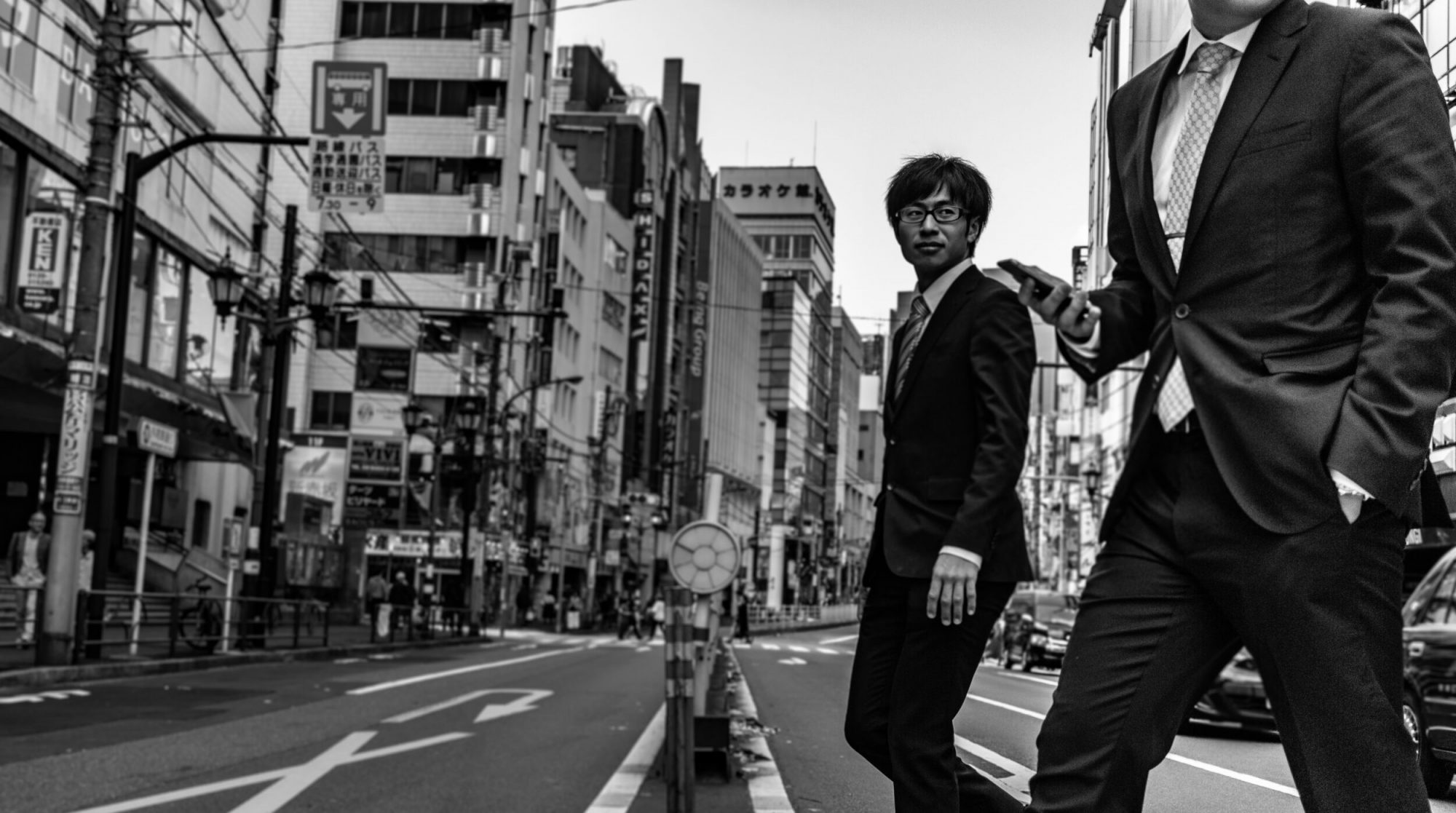This guide is to help you select the best Japanese knife suitable for your needs. Japanese knives are famous for their beautiful and detailed design, history as well as the cuts they produce. They are often considered an art of their own since most of them are handcrafted. Not without reason, Japanese knives are most chosen by world’s best chefs. Their blades are typically thin and delicate, and prone to breaking if you don’t take care of them properly — not ideal for the clumsy chef. Yet, if you put a little bit more care into your knives, they will pay back in magnified joy and satisfaction from preparing your food. They allow for thin, precise cuts and beautiful presentation, the ones you’d find in a five-star sushi restaurant.
What is the best Japanese knife for me?
There is no magic in it when we say – the best Japanese knife is the knife that works best for you. When shopping for knives, you need to ask yourself, what you’ll be using your knives for. Professional chefs and home cooks typically have different needs. Professional chefs tend to use their knives upwards of 40-50 hours of week, while home chefs typically use them for about twenty minutes a day to prep dinner.
With that in mind, you don’t need to invest in heavy-duty blades that have better edge retention which professional chefs use. They are traditional Japanese slicers that feature a single bevel blade. Unlike Western style Japanese knives that have a double edge, single bevel knives can achieve a super sharp cutting edge, perfect for the most clean cuts like filleting fish for a perfect sushi sashimi.
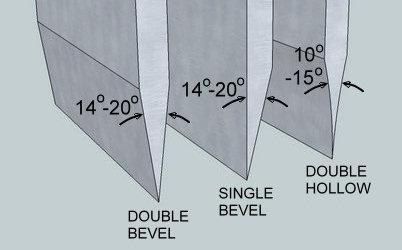
If you’re a home cook, a kitchen knife that’s easy to sharpen and perfectly balanced is something you should be looking into. Holding the knife to see what feels right for you is recommended. If you’re buying online, you should look for stores which allow you to test the knife with no risk and return it if unsuitable. The shape of the handle and heft of the knife are factors to consider. Most knife handles are made with right handed people in mind. For that, you can go for octagonal or D-shaped or oval handle. If you’re left handed and the mentioned shapes don’t fit you, you can have a custom handle made for you.
Apart from that, you should answer yourself few other questions:
- Budget – what’s the maximum you want to spend for a good quality, long lasting knife/knives?
- Steel type – Does your knife definitely have to be stainless or you don’t mind a little more maintenance?
- Sharpening – Have you ever sharpened or are you able to sharpen the knife at home? If not, are you willing to learn how to sharpen the knife at home?
- Length – Based on your past experience, what is a comfortable length for you?
- Application – Are there specific jobs you want the knife to perform (e.g boning, filleting fish, chopping herbs etc.)?
Only you can decide what is the best, most useful and comfortable knife for you, you can then start to build your own set – if necessary over a period of time, rather than all at once.
The difference between Japanese and Western kitchen knives
Japanese knives are generally made from harder steel than Western knives. This allows for the edges to hold sharper for longer. While the blade is able to withstand wear and tear to a greater degree than Western knives, the harder steel can be brittle. It is imperative that you use the correct type of Japanese knife for individual tasks. Whereas a Western chef’s knife may be able to cut through a chicken bone, doing so with a Japanese chef’s knife could see you ruin the edge. Japanese style knives also differ in that the shape of the blade is very rarely curved. Being long and straight, you should be careful to check that any knife sharpener you buy can efficiently sharpen knives of this shape. If you want to read in more depth about the difference between Japanese and Western kitchen knives, go here.
Stainless steel or a high carbon one?
Often, a stainless steel tends to be a softer form of steel, which means it often won’t hold an edge as well as carbon steel. Carbon steel stays sharper longer than stainless. Carbon steel, despite being harder than stainless steel, is way easier to sharpen than stainless. To make things a little bit more complicated, you also have a high carbon stainless steel.
Stainless steel is an alloy of iron, approximately 10~15% chromium, possibly nickel, and molybdenum, with only a small amount of carbon. Good Stainless steel blade kitchen knives make good rust resistance, easy maintenance, good sharpness, edge retention and ease of re-sharpening. Therefore, they have become more and more popular among beginning users to semi-professional users.
High Carbon Stainless Steel normally refers to a higher-grade, stainless steel alloys with a certain amount of carbon, and is intended to combine the best attributes of carbon steel and ordinary stainless steel. The high carbon stainless steel blades do not discolour or stain, and maintain a sharp edge for a reasonable time.
Most “high-carbon” stainless blades, like a VG10 type of steel are made of higher-quality alloys than less-expensive stainless knives, often including amounts of molybdenum, vanadium, cobalt, and other components intended to increase strength, edge-holding, and cutting ability.
Start with one knife only
Although we all like to have choice, majority of work you do in the kitchen is done on one or two knives – usually these are the multipurpose chef’s knife (Japanese equivalent is called The Gyuto) and a small utility knife (Japanese name: Petty).
Knowing that will guide you to focus on selecting and trying your must-have. Next time you are in the kitchen notice that whenever you need to use a knife, you probably have and choose between one or two of your favourites.
When buying a new knife, it’s not a wise idea to go for a set of knives because of their aesthetic value. Also, quality always trumps quantity. Rather than buying a set of knives – some of which are either used very rarely or at all, it’s best to buy a couple of really good knives that you enjoy using all the time.
Once you feel like it’s not enough, you’d like to experiment with different knives for a particular purpose. The same rule applies to buying Japanese knives.
We always advise our clients to select the knives they need and are comfortable with. Life is about choice and preferences, so while majority of people like guyto (chef’s) knife of 210mm, you may prefer a knife that is longer, shorter or bit narrower than the one with “bestseller” tag. Or, you may find a slightly different paring or utility (petty) blade more comfortable.
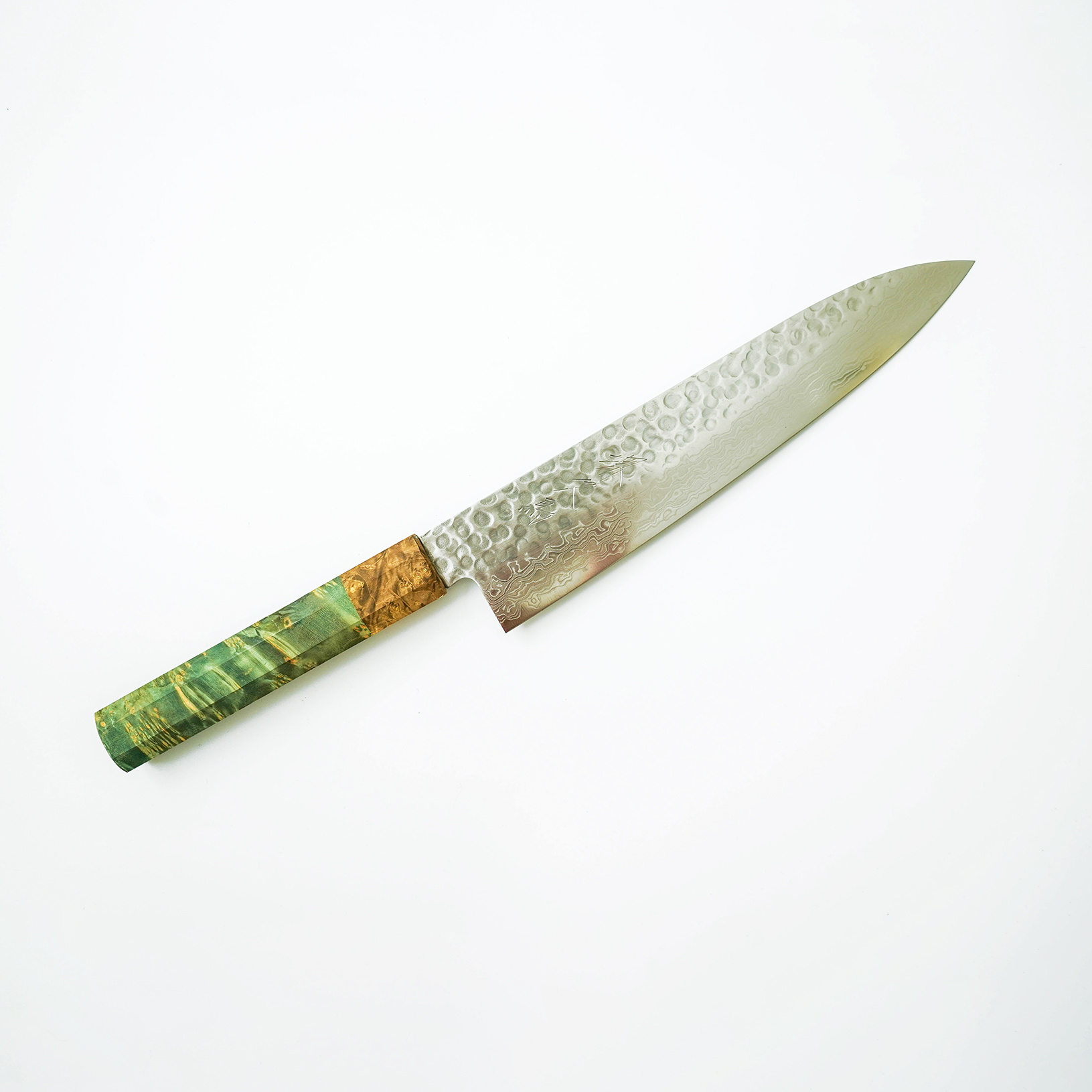
General rules for choosing a knife shape
- Knife designed for vegetables and fruits has a much broader blade than knife designed for cutting raw fish – these have very narrow blade.
- The more curved the edge, the more it is designed for slicing and cutting with a rolling action (as you see some professionals doing) and for chopping (with the tip on the board). The straighter the edge, the easier it is for slicing (with a lateral action as in slicing smoked salmon), dicing (as you would potatoes or hard vegetables) and chopping with a straight vertical cut.
- Narrow blades are not suitable for cutting fast or with a traditional rolling action. They are also not suitable for chopping.
- Wide blades generally tend to be longer than their narrower cousins and therefore difficult to use for pairing, peeling and general cutting in the hands.
Design
Unsurprisingly, the basic design of a knife almost hasn’t changed in the last 10 000 years – it’s a blade with a handle. What has changed, however, and is constantly changing, are the materials used in the making of knives and the handle shapes.
In very general terms, the price and quality of the knife are determined by:
- The quality of steel or alternative material used to create the blade. (For more info, read our guide to find the best knife steel for your needs: VG10, Blue Steel and others)
- The balance and feel of the knife
- The method used to create the shape of the blade. (hammered, stamped, roll forged, drop forged, hand forged etc.)
- The sharpness, the longevity of the edge and ability to prevent rusting (determined by steel and a production method)
- Frequency of resharpening (determined by the above – though some very fine knives with razor sharp edges may require more maintenance)
- Quality of a handle, manufacturing and forging
Again, remember what you are buying is a tool, therefore function and ergonomics are more important than the look. Buy the finest edge your budget will allow. Do not buy knife because it looks nice as a kitchen accessory. Don’t make the mistake of buying a set of beautiful, shiny handles. Think of your knives as a tool – one that has to perform well in your hands several times a day. It is like a good pen, washing machine or a vacuum cleaner – if it doesn’t work well, it causes immediate frustration, so buy the very best you can afford.
That does not mean that you should put up with the ugly knife models just because of their sharpness – of course it is important that the knives you are using are aesthetically pleasing, but always put an emphasis on a sharp edge, the ability to hold a good edge, balance, ease of resharpening and a comfortable grip.
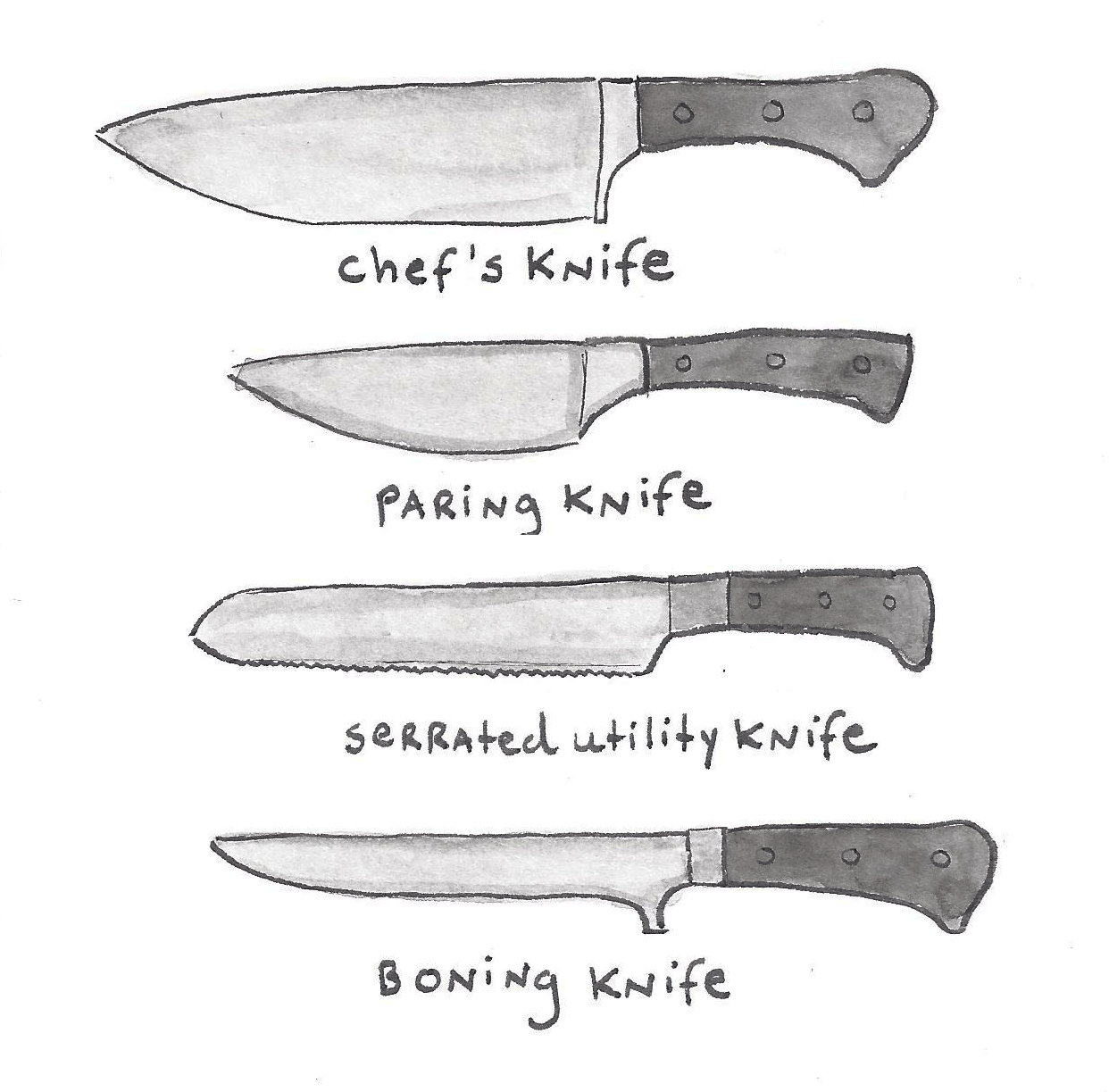
Chef's Knife - The Guyto
These are generally between 165mm and 240mm in length, wide at the handle end. You can comfortably and safely use a chef’s knife for chopping and cutting with a rolling action. The blade has slightly curved edge with a straight part at the handle end, so that it is easier to roll the blade. Slicing right through the cut is also immensely easy with this knife. This type of edge profile also facilitates clean cut chopping with the back end of the knife, with the tip on the cutting surface during the chopping action.
When you wish to be preparing more raw meat and fish than fruit and vegetables, look for a blade that is narrower at the tip end – a Gyuto is a good choice. Gyuto also makes a very good carving knife, that can double as a multipurpose knife for everyday use.
If preparing more vegetables than raw meat and fish then the Santoku or Funayuki are the best choice. Santoku is also an excellent in chopping herbs and small greens.
Pairing, utility knife - The Petty
These are the most commonly used knives in most home kitchens. The blade is normally between 100mm & 150mm in length, has a narrow slim blade and can be used for peeling, paring and slicing. This style for blade is known as Petty in Japan.
The longer the length, the larger the food you can cut. Longer blade makes it also easier to use for slicing. This knife type should not be used for chopping because the hand knuckle holding the knife will stop the back end of the knife edge and you will not be able to get perfectly clean cuts. The same situation will happen if you try to use a classic rolling cut action. Be careful as there is a danger of cutting your knuckle, as the knife needs to be guided and controlled by the hand knuckle holding the food in a claw with the finger tips – well away from the knife edge. If you want a knife that is extremely sharp, choose one with a very thin edge. It’s important that you never use such knife with force, heavy impact or on cutting frozen food and bone. If you do so, the knife’s edge may chip and you may hurt yourself.
General differences between the steel (for the nerds)
Most stainless steel knives do not hold their edge well, unless they have been heat treated or hardened by some other method, so that the steel has achieved a Rockwell rating of at least 56:58. Anything less than this will make the knife loose its edge fairly quickly. It is also harder to resharpen stainless steel than high carbon one (both stainless and staining).
The more Chromium the blade has the harder it is to maintain a good edge. Shall you consider buying a stainless steel knife, look for one that has Molybdenum and Vanadium rather than just Chromium, and one that’s been hardened to 58 or more on the HRC scale (the seller should know the hardness of the knives she/he sells).
General guideline: The higher the carbon content of the steel, the longer the edge will last and the easier it will be to resharpen. For more detailed information about the difference between steels and how to choose the best one for your desired purpose – please read this article.
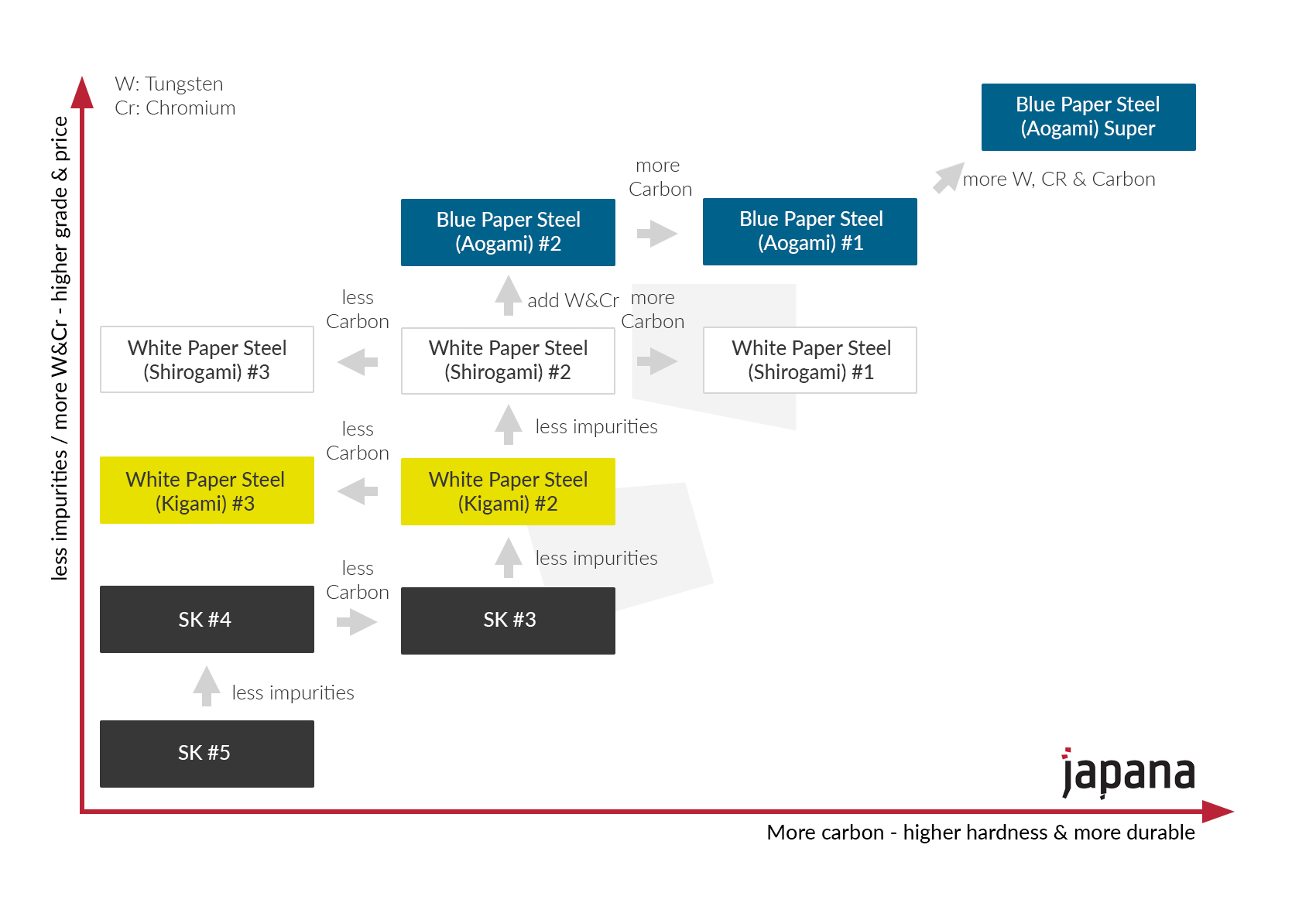
Choices, choices...
Don’t worry if it’s your first adventure with Japanese blades. And with our 45 days money back guarantee – no questions asked, you can go ahead and order a knife to try. If you don’t like it, just simply return it and we will give you your money back. If you keep in mind our guidelines for knife selection (purpose and budget the first, aesthetics the last), you will easily find your perfect kitchen tool.
